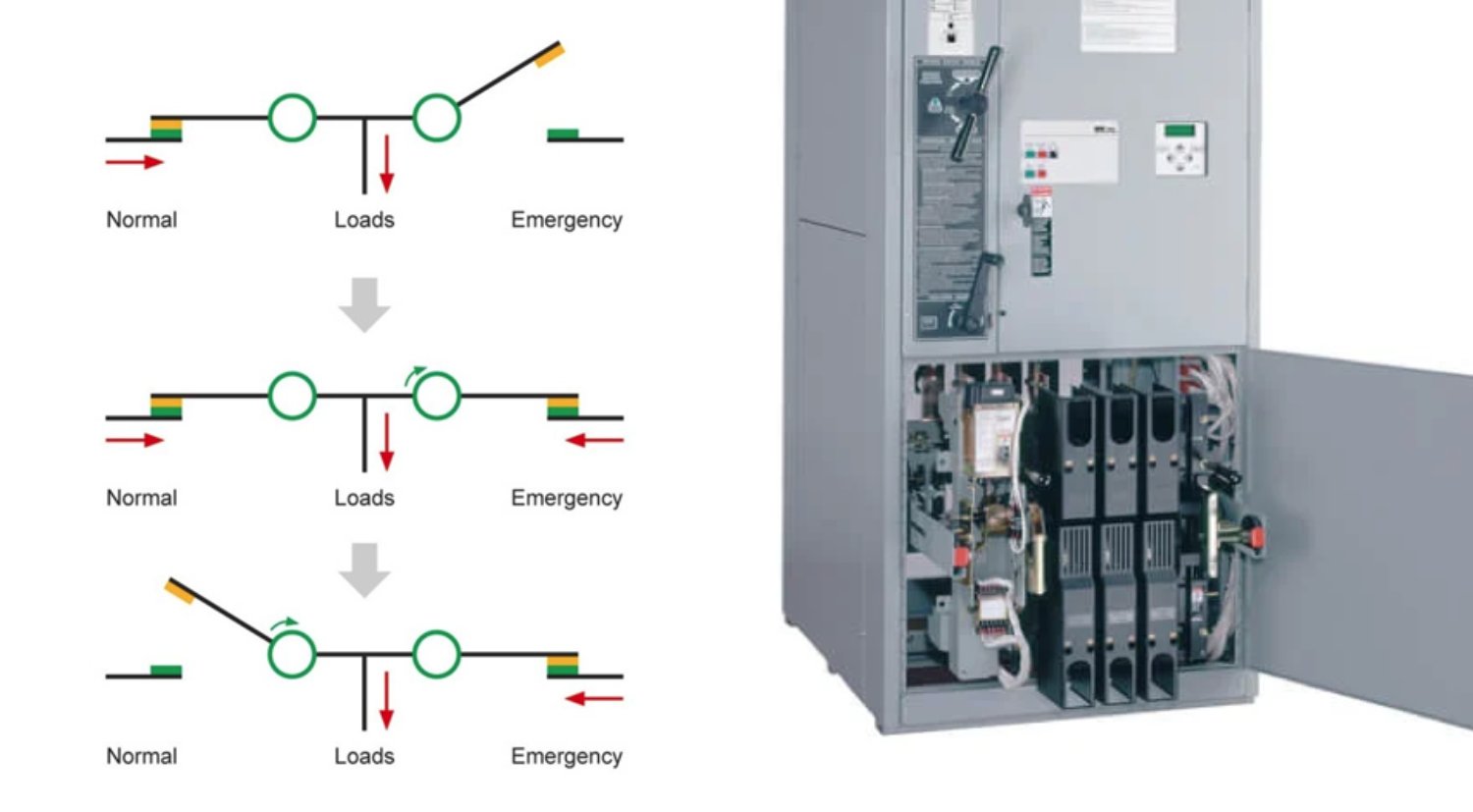
A closed transition transfer switch (CTTS) is a crucial component of power management systems, ensuring seamless transitions between power sources. This article examines the significance of closed-transition transfers and highlights the need for careful consideration to prevent extended parallel conditions.
A CTTS is a make-before-break connection, where the switch connects two input sources before disconnecting from the alternate source. So, we are intentionally connecting two separate sources for a short period of time that must be “in synch” – meaning the phase voltage and frequency are matched within a specified limit. The transfer switch will control and monitor this synchronous connection for us, ensuring the transfer can be completed safely.
TechSite recommends the use of a CTTS at main service entrance locations to avoid unnecessary power interruptions during transfers between generator and utility sources. This practice is especially valuable after utility outages to prevent additional, unnecessary, momentary power loss that would occur when completing a return to normal transfer from generator to utility. Moreover, it facilitates preventive maintenance activities, such as generator load tests and UPS battery maintenance, without any interruption. Ensuring a seamless power transition will go a long way in reducing the stress and headache of securing maintenance approvals.
Deploying a closed-transition transfer switch requires careful consideration, with a primary concern being the avoidance of an extended parallel condition. To address this issue, most Automatic Transfer Switch (ATS) manufacturers offer a relay that monitors contact positions of both sources. During an extended parallel condition, this relay triggers the opening of one set of contacts, eliminating the extended parallel condition. This action also locks out the automatic operation of the switch until reset. It is recommended to open the utility source contacts to ensure the building can still be supplied with power from the on-site generator. If we were to open the generator contacts, and then lose utility again… sorry, I won’t even type the end of that scenario, but it doesn’t end well for any of us.
Furthermore, consultation with the local utility company is crucial before deploying a CTTS. Most utilities will approve a CTTS with an overlap condition of less than 100ms, provided comprehensive design documentation is submitted and approved. This documentation ensures that appropriate safeguards are in place, preventing potential hazards. This is necessary as an extended parallel condition could energize utility lines and be an extreme safety hazard to utility line workers.
An additional consideration is if an ATS motor operator or solenoid experiences a failure and is unable to open energized contacts during an extended parallel condition. To fully remediate this failure, TechSite also recommends installing a shunt-trip to an upstream main breaker or switch during an extended parallel condition. The shunt trip is a device that, when activated, immediately trips the protective device, disconnecting the power source connected to it and thus eliminates the extended parallel condition. Again, TechSite recommends shunt-tripping the utility source here and not the generator source to ensure a reliable source of power is available until the switch can be reset and put back into safe operation. An important note here is that this upstream breaker or switch will need the necessary shunt-trip mechanism installed to be compatible, a shunt trip accessory may need to be added to the protective device or a replacement device be installed.
The proper implementation of closed-transition transfer switches is vital for maintaining uninterrupted power, managing transitions between utility and generator sources, and deploying a safe installation. Careful consideration of potential extended parallel conditions is essential to avoid safety hazards and operational disruptions. Utilizing shunt-tripping mechanisms as an added layer of protection enhances system reliability and safety. Collaborating with utility companies and adhering to guidelines ensures the overall effectiveness of the power transfer system, safeguarding workers and operations alike.
This resource is provided by TechSite, the mission critical facility experts specializing in consulting engineering, construction management, turnkey design build, and maintenance services. Contact us today to discuss your facility needs.
